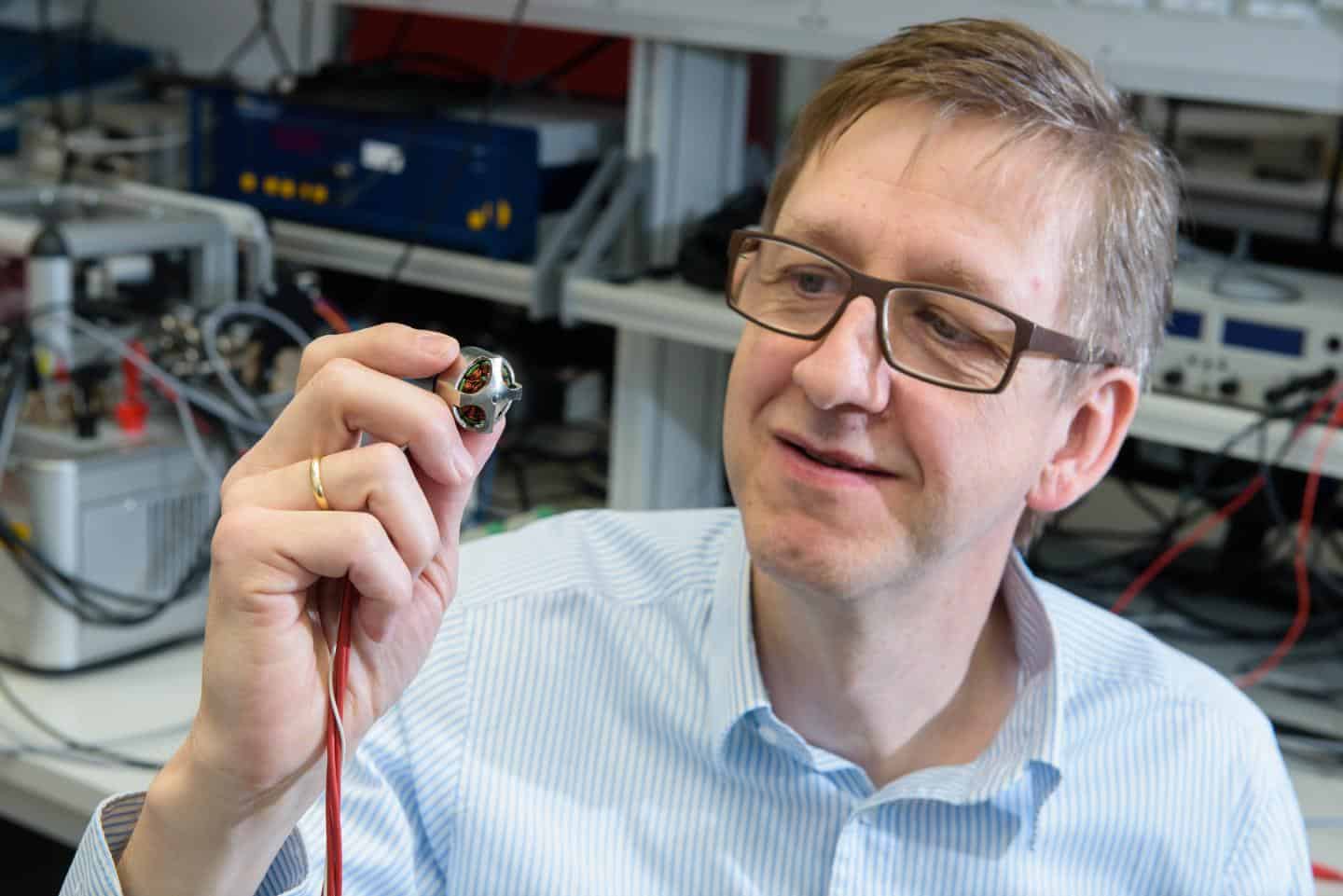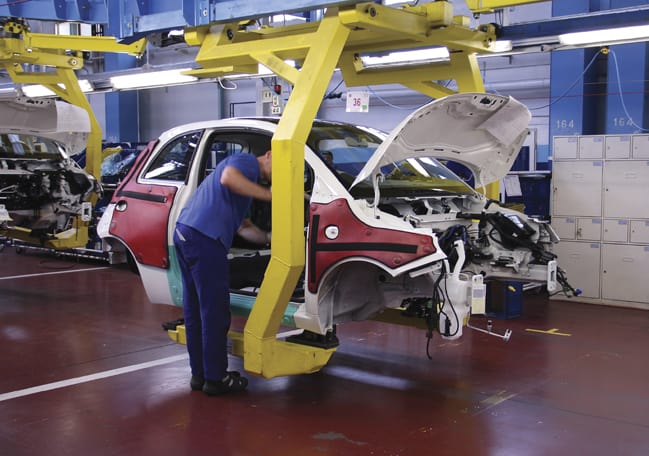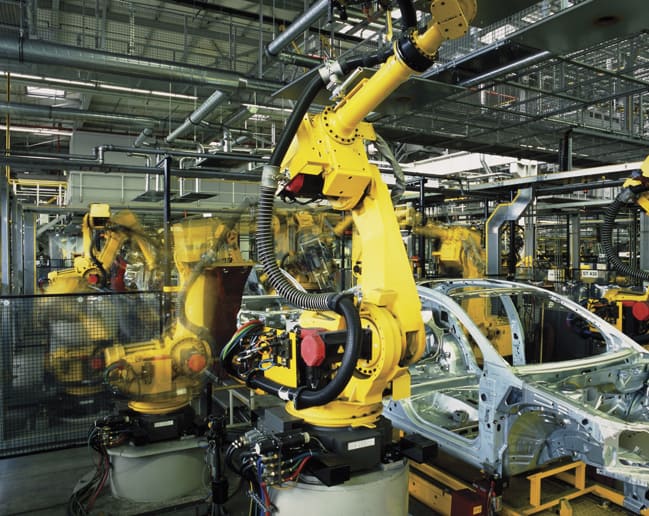The rise of Industry 4.0 and smart production lines means sensors are increasingly being used in all areas of manufacturing.
These sensors can provide engineers with exhaustive details on the health and operation of their production lines.
But installing huge numbers of sensors on machinery and equipment can add considerable costs to an operation. A fault with a single sensor on the line can also lead to production downtime and financial losses.
To this end, Prof Matthias Nienhaus, a drive systems specialist at Saarland University in Germany, and his colleagues are developing smart motors that do not need external sensors. Instead the motors themselves act as sensors, allowing them to monitor whether they are running smoothly and detect any faults.

The motors are also capable of communicating and interacting with each other. In this way they could be used to form a network of smart motors, linked by an operating system, and capable of monitoring the entire production line.
Ultimately, the system could make it possible for one motor to automatically take over from another in the event of a failure.
By allowing production components to continuously monitor themselves for faults and signs of wear in this way, the researchers hope to make manufacturing more cost-effective and flexible. “We can see how a bearing is working, and whether there is a problem with the winding or with the coils, for example, and we can react to it to maintain the motor,” he said.
Reducing the use of additional sensors can save a considerable amount of space and money, according to Nienhaus. This is particularly the case with smaller motors. “Relative to the amount you spend on a small motor, the [sensor] encoder is nearly the same cost,” he said. “So if you want a motor that is able to measure positioning, then you have to invest in a sensor that costs roughly the same amount as the motor,” added Nienhaus.
Using fewer sensors also reduces the complexity of the system, by cutting down on the number of cables and other equipment needed, he said.
To use the motor as a sensor, the researchers monitor the distribution of its magnetic field strength. As the electric current flows through the coils within the outer ring of the motor’s rotating permanent magnets, a magnetic field is created.
By monitoring how the magnetic field changes as the motor rotates, the team can calculate the exact position of the rotor and is able to draw inferences about how it is performing.
The magnetic field is monitored by measuring the electrical signal from the motor. Any deviation in the magnetic field, caused, for example, by a fault altering the normal operation of the motor, will alter the electrical signal, said Nienhaus. “If we change something in the motor, for example, if there is a hole in the magnet, then you can see it in the signal,” he said. “It works like a finger print, so each motor has its own fingerprint.”
By analysing these signal patterns the researchers can detect changes caused by malfunction or wear. This allows the researchers to very precisely pinpoint problems with the bearing, for example, or if the motor’s mount assembly has not been well built, said Nienhaus.

The researchers are now developing mathematical models to simulate the different motor states, fault levels and degrees of wear. These will be fed into a microcontroller, to allow it to continuously process the data coming out of the motor. Any faults can thus be responded to immediately.
As part of the project, known as Modular Sensor Systems For Real-time Process Control and Smart State Monitoring, Nienhaus and his colleagues are investigating which motor speed range generates the best data, and which type of motor is most suited to the application.
Alongside the team at Saarland University, the project also includes researchers at the Fraunhofer Institute for Microelectronic Circuits and Systems and at Kaiserslautern University of Technology, as well as companies such as Bosch, Festo, Sensitec, Lenord, Bauer and Company, Pollmeier and Canway Technology. The €3.1m (£2.4m)project is being funded by the German Federal Ministry of Education and Research (BMBF).

One potential application for the self-monitoring motors the team is investigating is in the development of smart conveyor belts for factories, distribution centres and airports. Each drive roller in the conveyor system could be fitted with one of the sensor motors, which would allow it to continuously monitor its performance and health.
The smart rollers would also be able to communicate with one another, and their operating system, to allow them to respond automatically to changes or problems, said Nienhaus.
So, for example, if a fault appeared in one of the rollers, it could be instantly detected and the products, packages or luggage automatically directed along a different route.
“We would like to make a complete conveyer system, where each roll has a motor and an operating system, and via this operating system the individual rolls can talk to other rolls,” said Nienhaus. “This would result in a very powerful and complex system where each roll is one cell, and all of the cells work together.”
By analysing data on the roller’s angular momentum, the system could even estimate the weight of the package moving over it, and determine if there is space inside for another item, he added.
“We would like to make the system very simple, and we are also working with a chip manufacturer, to put all of the electronics and software into a single chip,” said Nienhaus. “That will be a very important step in making the technology cheap enough to be used in each roll.”
The project, dubbed ‘Rolle’, is being funded by a €4.2m grant from the BMBF, and was presented at Hannover Messe in April. The team is planning to test the system at a large distribution centre.




Glasgow trial explores AR cues for autonomous road safety
They've ploughed into a few vulnerable road users in the past. Making that less likely will make it spectacularly easy to stop the traffic for...